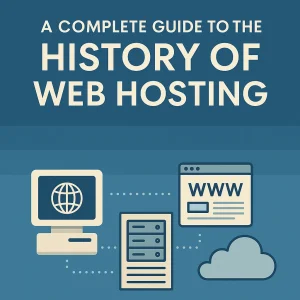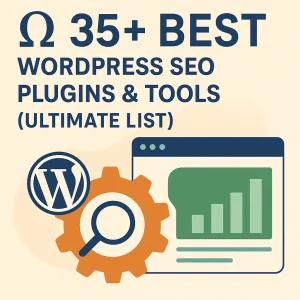Here we are on the final day of the year, and most will agree that 2018 has seen IT technology expand in leaps and bounds exactly as it was expected to. In truth, it seems every year brings us a whole whack of new technology trends cementing themselves in the world of IT, web, and computing development. Not surprisingly, the same is forecast for 2019.
Here at 4GoodHosting, a significant part of what makes us one of the many good Canadian web hosting providers is that we enjoy keeping abreast of these developments and then aligning our resources and services with them when it’s beneficial for our customers to do so.
Worldwide IT spending for 2019 is projected to be in the vicinity of $3.8 trillion. That will be a 3.2% increased from the roughly $3.7 trillion spend this year. That’s a LOT of money going into the research and development shaping the digital world that’s so integral to the professional and personal lives for so many of us.
So for the last day of 2018 let’s have a look at the top 10 strategic technology trends we can expect to become the norm over the course of the year that’ll start tomorrow.
-
Autonomous Things
We’ve all heard the rumblings that we’re on the cusp of the start of the robot age. It seems that may be true. Autonomous things like robots, drones and autonomous vehicles use AI to automate functions that were performed by humans previously. This type of automation goes beyond that provided by rigid programming models, and these automated things use AI to deliver advanced behaviors tailored by their interacting more naturally with their surroundings and with people – when necessary.
The proliferation of autonomous things will constitute a real shift from stand-alone intelligent things to collections of them that will collaborate very intelligently. Multiple devices will work together, and without human input if it’s not required – or not conducive to more cost-effective production or maintenance.
The last part of that is key, as the way autonomous things can reduce production costs by removing the employee cost from the production chain wherever possible is going to have huge ramifications for unskilled labour. As the saying goes – you can’t stop progress.
-
Augmented Analytics
Augmented analytics can be defined as a focus on specific area of augmented intelligence, and most relevantly in what we’re talking about here is the way we’ll see it start to use machine learning (ML) to transform how analytics content is developed, shared, and consumed. The forecast seems to be that augmented analytics capabilities will quickly become part of mainstream adoption methods and affix itself as a key feature of data preparation, data management, process mining, modern analytics, data science platforms and business process management.
We can also expect to see Automated insights from augmented analytics being embedded in enterprise applications. Look for HR, finance, marketing, customer service, sales, and asset management departments to be optimizing decisions and actions of all employees within their context. These insights from analytics will no longer be utilized by analysts and data scientists exclusively.
The way augmented analytics will automate the data preparation process, insight generation and insight visualization, plus eliminate the need for professional data scientists promises to be a huge paradigm shift too. It’s expected that through 2020 the number of citizen data scientists will have expanded 5x faster than the number of ‘industry-expert’ data scientists, and these citizen variety will then fill the data science and machine learning talent gap resulting from the shortage and high cost of traditional data scientists.
-
AI-Driven Development
We should also expect to see the market shifting from the old way where professional data scientists would partner with application developers to create most AI-enhanced solutions to a newer where a professional developer can operate on their own using predefined models that are now delivered as a service. The developer is now provided with an ecosystem of AI algorithms and models, and now has development tools that are tailored to integrating AI capabilities and models into workable solutions that weren’t reachable before.
AI being applied to the development process itself leads to another opportunity for professional application development that serves the aim to automate various data science, application development and testing functions. 2019 will be the start of a 3-year window where it’s forecast that at least 40% of new application development projects will have AI co-developers working within the development team.
-
Digital Twins
Much as the name suggests, a digital twin is a digital representation of a real-world entity or system, and we can expect them to start being increasingly common over the coming year. So much so in fact that by 2020 it is estimated that there will be more than 20 billion connected sensors and endpoints serving digital twins working on millions and millions of different digital tasks.
These digital twins will be deployed simply at first, but we can expect them to evolve them over time and have ever-greater abilities to collect and visualize the right data, determine correct application of the right analytics and rules, and respond effectively to business objectives.
Organization digital twins will help drive efficiencies in business processes, plus create more flexible, dynamic and responsive processes that can potentially react to changing conditions automatically, and we can look for this trend to really start picking up steam in 2019.
-
Immersive Experience
The last trend we’ll touch on here today is the one that most people will be able to relate to on a n everyday level. We’re all seeing the changes in how people interact with the digital world. Virtual reality (VR), augmented reality (AR) and mixed reality (MR) are revolutionizing the way people interact with the digital world, as well as how they regard it overall. It is from this combined shift in perception and interaction models that future immersive user experiences will be shaped.
2019 should see a continuance of thought and perspective about individual devices and how fragmented user interface (UI) technologies are used for a multichannel and multimodal experience. The relevance of that all will be in how the experience connects people with the digital world across hundreds of edge devices surrounding them - traditional computing devices, wearables, automobiles, environmental sensors and consumer appliances will all increasingly be part of the ‘smart’ device crowd as we move forward.
In the bigger picture, this multi-experience environment will create an ambient experience where the spaces that surround us create a ‘digital entirety’ rather than the sum of individual devices working together. In a sense it will be like the environment itself is the digital processor.
We’ll discuss more about what’s forecasted to be in store for web hosting and computing in 2019 in following weeks, but for now we’d like to say Happy New Year to you and we continue to appreciate your choosing as us your web hosting provider. Here’s to a positive and productive coming year for all of you.















